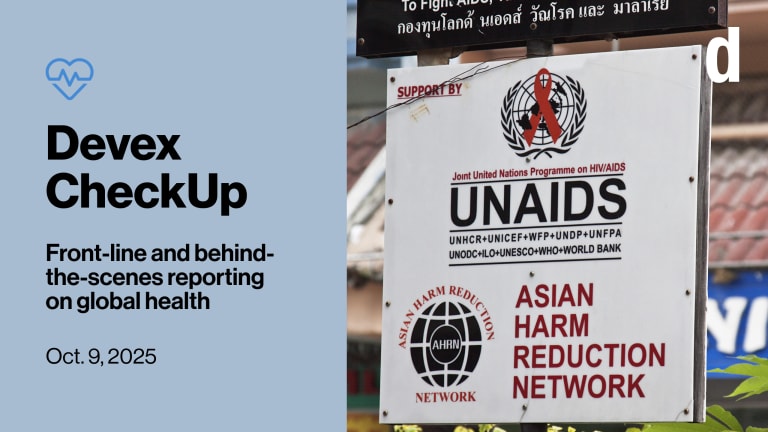UNAIDS is significantly reducing its global footprint and “eventually plans to close down,” according to a report set to be discussed by the U.N. joint program's board at its meeting next week.
The report presents UNAIDS’ new operating model, which reflects UNAIDS’ ongoing restructuring amid significantly reduced donor funding and calls for changes within the joint program and the broader U.N. system. The new model is described as “agile and flexible to absorb further change” and is expected to take effect by January 2026.
During this period, the UNAIDS secretariat will operate with less than half of the staff it has now, downsize its country offices, and deprioritize a significant number of its current activities.
Printing articles to share with others is a breach of our terms and conditions and copyright policy. Please use the sharing options on the left side of the article. Devex Pro members may share up to 10 articles per month using the Pro share tool ( ).








